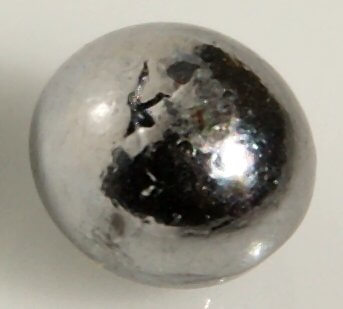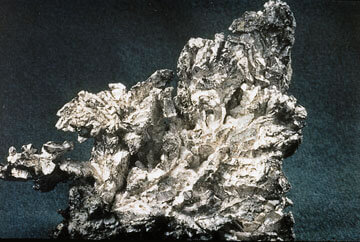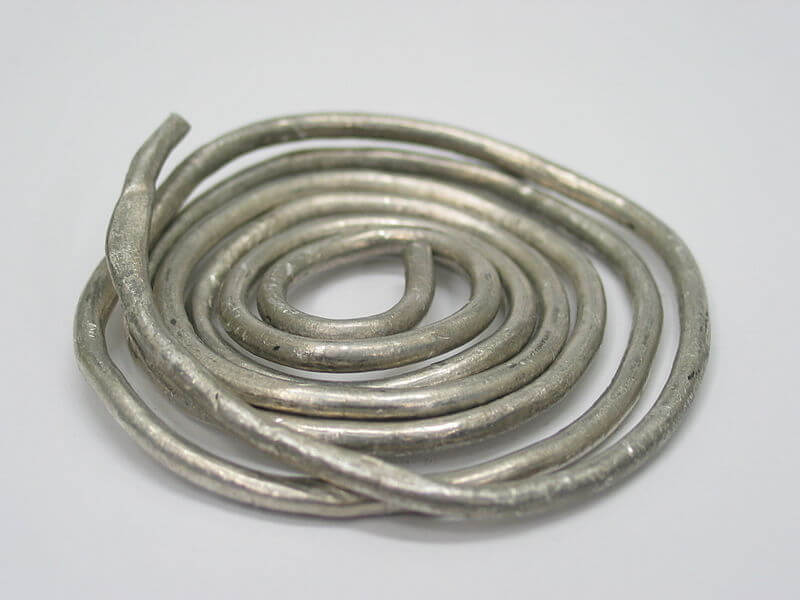Ever wondered why people keep their gold pieces in safes? And why your family silverware is always so well protected? Well, that’s obviously because gold and silver are two precious metals. That you already know… But what about other metals? There are other substances equally precious, even more, precious than gold, that you must get to know better. So here’s a list of the top 10 most precious metals in the world. A good gold detector or XRF can help you identify places where you can these precious metals.
1. Rhodium
This extremely rare, valuable and silvery-colored metal is commonly used for its reflective properties. It has a high melting point and an amazing ability to withstand corrosion. Do you need a geology course to find expensive metals?
Largest producers: South Africa, Russia, Canada, and other countries.
Uses: Commonly used for its reflective properties — in objects like searchlights, mirrors, and jewelry finish. Also valuable within the automotive industry and in several types of industrial fields.
Photo: Alchemist-hp

2. Platinum
Platinum has made a name for itself through its malleability, density, and non-corrosive properties. This metal is also similar to palladium in its ability to withstand great quantities of hydrogen.
Largest producers: South Africa, Russia, Canada, and other mineral processing countries.
Uses: Jewelry, due to its lustrous look and remarkable resistance, dentistry, weaponry, and aeronautics.
Photo: Jurii

3. Gold
Because of its desirability, durability and malleability, gold remains one of the most popular metals and investment options. Gold is usually separated from surrounding rocks and minerals by gold mining equipment and activities like panning, upon which the metal is extracted with a combination of chemical reactions, smelting, and Gold Refining process. If you are looking for gold, then be sure to look at those metal detectors that we recommend for gold.
You also don’t need to so much to find gold with our recommended cheap metal detectors that help to find metals like gold for a fraction of the cost of traditional equipment.
One of our most popular product for gold miners are rock crushers – which enable you to remove the gold from rock pay dirt.
Largest producers: South Africa, the United States, Australia, and China.
Uses: Jewelry and industrial uses. Its conductivity makes it a great component of electronics, and its reflective surface helps create better radiation shields and office windows. Gold is best measured by the fire assay method.
Photo: Alchemist-hp

4. Ruthenium
This member of the platinum metals retains many of the group’s characteristics, including hardness, rarity and an ability to withstand outside elements.
Largest producers: Russia, North and South America, and Canada.
Uses: Can be added as an alloy to platinum and palladium in order to increase hardness and better resistance. Ruthenium has become quite popular in the electronics field, as a way to effectively plate electric contacts.
Photo: Alchemist-hp

5. Iridium
This member of the platinum metals retains many of the group’s characteristics, including hardness, rarity and an ability to withstand outside elements.
Largest producers: Russia, North and South America, and Canada.
Uses: Can be added as an alloy to platinum and palladium in order to increase hardness and better resistance. Ruthenium has become quite popular in the electronics field, as a way to effectively plate electric contacts.
Photo: Alchemist-hp

6. Osmium
One of the densest elements on Earth, osmium is a bluish-silver metal. This very hard, brittle metal has an extremely high melting point.
Largest producers: Parts of Russia and North and South America.
Uses: Used to harden platinum alloys for electrical contacts, filaments, and other uses.
Photo: Alchemist-hp

7. Palladium
This grayish-white, precious metal is valued because of its rarity, malleability, stability under hot conditions, and ability to absorb a considerable amount of hydrogen at room temperature.
Largest producers: Russia, South Africa, the United States, Canada, and other various countries.
Uses: Automobile makers rely on it for their catalytic converters to reduce emissions, jewelers use palladium to create “white gold” alloys and electronics manufacturers have the option of plating with it.
Photo: Jurii
8. Rhenium
One of the densest metals, with the third-highest melting point. Rhenium is a by-product of molybdenum, which essentially is a by-product of copper mining.
Largest producers: Chile, Kazakhstan, and the United States.
Uses: Used in high-temperature turbine engines and added to nickel-based superalloys to improve temperature strength. Other uses include filaments, electrical contact material, and thermocouples.
9. Silver
This element has the best electrical and thermal conductivity, as well as the lowest contact resistance of all the metals.
Largest producers: Peru, China, Mexico, and Chile.
Uses: Jewelry, coinage, photography, circuitry, dentistry, and batteries. It can also be used to stop the spread of bacteria in cell phone covers, control odor in shoes and clothing, and prevent mold in treated wood. Silver is also used in key ball mill electronic components.
10. Indium
A rare metal produced from zinc-ore processing, as well as lead, iron, and copper ores. In its purest form, it presents the color white and it’s extremely shiny and malleable.
Largest producers: China, South Korea, and Japan.
Uses: During World War II, it was used as a coating for bearings in aircraft engines, but it can also be used to create corrosive-resistant mirrors, semiconductors, alloys, and electrical conductivity in flat-panel devices.





